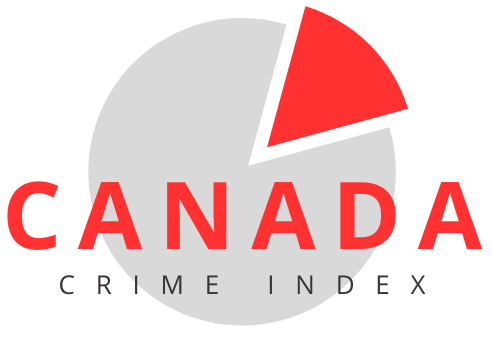The recent decision to increase the minimum wage in Prince Edward Island (PEI) to $16 per hour by October 2024 has sparked discussions on whether this wage is sufficient to sustain a decent living standard.
With all the costs rising, it is important to examine the adequacy of this wage in meeting the basic needs of workers in PEI.
Let us talk about minimum wage in PEI in greater detail.
Table of Contents
ToggleWhat is the Minimum Wage in PEI?
Over the past decade, Prince Edward Island province has seen a series of incremental increases in the minimum wage, aimed at aligning worker earnings with the rising cost of living.
From $10 per hour in the early 2010s to the current $15 per hour, these increases have been a response to both inflationary pressures and advocacy from labor groups.
It is important to know that a new minimum wage PEI is set to increase to $16 per hour on 1. October 2024.
- Economic conditions
- The cost of living
- Feedback from stakeholders
PEI’s minimum wage has often lagged behind other Canadian provinces, where higher wages are more common. A report by the Fraser Institute has pointed out a significant lag behind other provinces.
For instance, Ontario and British Columbia have set their minimum wages above $16 per hour, reflecting a more aggressive approach to wage policy.
Can $16 an Hour Sustain a Modest Lifestyle?
- Family size – average household size is 2.3
- Location
- Individual circumstances
For a single individual without dependents, $16 per hour might be sufficient to cover basic needs, but the margin for unexpected expenses or savings is slim.
For families, particularly those with children, the situation becomes more challenging.
Hypothetical budgets for individuals or families living on a $16 per hour wage often reveal a precarious financial situation.
After accounting for housing, food, transportation, and utilities, there is little left for other necessities such as healthcare, education, or emergencies.
This financial tightrope can lead to increased stress and limit opportunities for social and economic mobility.
- Child care – $10 per day
- Rent – $1,523 per month
- Food – $468.70 per month
- Transportation – $639 per month
Now let us see how PEI minimum wage compares to other provinces in Canada:
| Province | Min Wage |
|---|---|
| Alberta | $15.00 |
| British Columbia | $17.40 |
| Manitoba | $15.30, increasing to $15.80 |
| New Brunswick | $15.30 |
| Newfoundland & Labrador | $15.60 |
| Northwest Territories | $16.05 |
| Nova Scotia | $15.20 |
| Nunavut | $19.00 |
| Ontario | $16.55, increasing to $17.20 |
| Quebec | $15.75 |
| Saskatchewan | $14.00, increasing to $15.00 |
| Yukon | $17.59 |
Cost of Living in PEI
Now let us address the costs of living in this province.
Housing Costs
Housing affordability is a significant concern in PEI for various reasons.
The average home price in PEI, after it climbed steadily, has started to decline a bit in the last two years.
Still, this province faces has worst housing problem in the country since 2020.
- 2022 – $388,218
- 2023 – $382,659
- 2024 – $366,349
But we must say that an increase is to be expected in 2025 when it will touch $375,867.
On the other hand, rental rates have also seen a sharp increase, further straining the budgets of low-income workers.
In Charlottetown, the renting prices became a problem for those who live off a minimum wage:
| Property Type | Average Price | Price Change (%) |
|---|---|---|
| Apartments | $1,287 | 2% |
| Condos | $2,000 | 5% |
| Houses | $2,750 | 45% |
For someone earning $16 per hour, the cost of housing represents a substantial portion of their monthly income.
To put this in perspective, a full-time worker earning $16 per hour would take home approximately $2,560 per month before taxes.
That leaves little room for other essential expenses, making it difficult for minimum wage earners to secure affordable housing in PEI.
Other Living Expenses
Outside housing, other living expenses such as food, transportation, and utilities also place a significant burden on those earning minimum wage.
The cost of groceries in PEI has been rising, partly due to the island’s reliance on imported goods and the general inflationary trends affecting food prices nationwide.
Recently we saw a decline, but the inflation left a gap that will need time before it is bridged.
Transportation costs, including gas and public transit, add another layer of financial pressure, particularly for those living in rural areas where commuting distances are longer.
After months of increases, gas prices have finally dropped in August 2024.
One of the measures to combat rising prices of transportation is freezing the public transit prices at $2.
At the same time, using public transportation remains free for:
- Children
- Students k-12
Utilities, including electricity, heating, and internet services, further erode the disposable income of minimum wage workers.
The current prices of utilities are at:
| Type of Utility Bill | Average Cost |
|---|---|
| Average Maritime Electric Rates | $147.00 |
| Average Cost of Water Bill | $105.00 |
| Average Cost of Heating Oil | $363.00 |
| Average Cost of Internet | $72.00 |
| Average Cost of Cable | $35.95 |
| Average Cost of Home Phones | $23.00 |
| Total | $382.95 |
When combined, these expenses can easily exceed the monthly income generated by a $16 per hour wage, forcing workers to make tough choices about which bills to prioritize.
The financial strain underscores the challenge of living on minimum wage in PEI, where the cost of living often outpaces wage growth.
Minimum Wage PEI vs. Living Wage PEI
- Food
- Housing
- Healthcare
In PEI, the estimated living wage in Charlottetown is approximately $19.30 per hour, significantly higher than the $16 per hour minimum wage set to take effect in 2024.
The case for this was made in a report compiled by Christine Saulnier. The financial disparity is more than evident.
A living wage takes into account the actual cost of living in a specific region, considering factors like housing, transportation, and child care.
It is designed to ensure that workers can lead a modest lifestyle without relying on government assistance or taking on excessive debt.
In contrast, the minimum wage is a legally mandated floor, intended to provide a basic income for workers but often falling short of covering all essential expenses.
The difference between the living wage and minimum wage PEI underscores the challenges faced by low-income workers.
While the $16 per hour wage is a step in the right direction, it still leaves many workers struggling to make ends meet.
Addressing this gap requires a broader approach that includes wage adjustments, improved social supports, and policies that address the root causes of poverty in the province.
Job Availability and Industry Sectors
These sectors are labor-intensive and typically rely on seasonal employment, with many workers earning minimum wage.
While the $16 per hour minimum wage aims to provide a livable income, it also raises questions about its impact on employment opportunities within these industries.
Agriculture, for instance, is a cornerstone of PEI’s economy, but it is also a sector that operates on thin profit margins. Not to mention that the future is uncertain, because of climate change.
For instance, a study published in Foods, states that potato production in PEI will be significantly reduced due to climate changes in the future.
- Under low emission scenario; 6-10% decline
- High-emission scenario; 48-60% decline
All this leaves the workers in jeopardy of losing their employment. The ultimate challenges for local producers are:
- Distant market
- Small production
Not to mention that the increased wage costs could lead to fewer job opportunities in the industry, as employers may opt for automation or reduce their workforce to manage expenses.
Similarly, the tourism industry, which heavily depends on low-wage, seasonal workers, may face challenges in sustaining employment levels, particularly during off-peak seasons.
Emerging sectors in PEI, such as technology and renewable energy, offer more promising employment prospects with higher wages.
One of the big news in the province is a $69 million investment in a solar farm in Summerside.
Still, these opportunities are not evenly distributed, leaving many workers in traditional industries to grapple with the limitations of a minimum wage job.
In Conclusion
The $16 per hour minimum wage PEI represents a step forward, but it is not a panacea for the financial challenges faced by low-wage workers.
Ongoing efforts are needed to monitor living costs and advocate for policies that ensure all workers can achieve a basic standard of living.
Addressing these issues requires a comprehensive approach that includes both wage adjustments and improved social support.

















